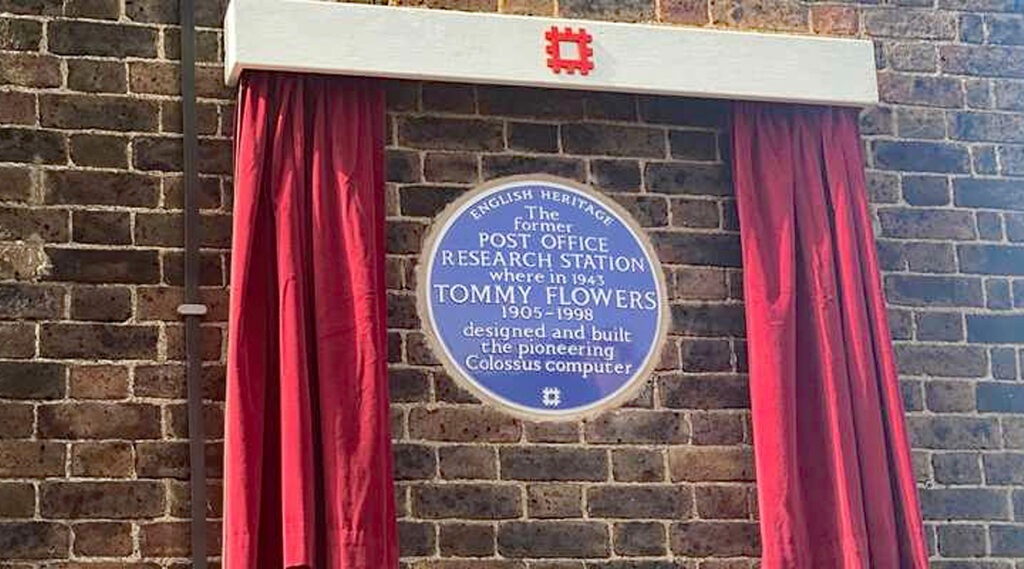Although Alan Turning gets justifiable fame for his WWII computer work, he needed help, and now a Blue Plaque has been installed to celebrate the electrical engineer who made it all possible, Tommy Flowers.
Tommy Flowers worked at the Post Office’s research laboratories in Dollis Hill in northwest London, where he demonstrated how Alan Turning’s computations could be mechanised by a programmable computer.
In 1941, he spent a brief time posted at Bletchley Park in order to assist the code-breaking teams there, including Alan Turing. It was after this secondment that Flowers and his team set out to build an all-electronic machine. After just eleven months, and using mostly spare bits of telephone circuitry, ‘Colossus’ was successfully demonstrated at Dollis Hill in December 1943.
The problem of thermionic valve failure caused by temperature fluctuation was avoided by the simple expedient of keeping the machine permanently switched on: this was Flowers’ famous ‘lightbulb moment’.
Following its transfer to Bletchley Park by lorry – and despite it being, in Flowers’ words ‘a string and sealing wax affair’ – the first Colossus was deciphering the most sophisticated German codes within a fortnight. Flowers and his colleagues then quickly delivered Colossus Mark II, which was brought into operation five days before D-Day in June 1944. As the fastest code-breaking machine constructed during the Second World War, it has been convincingly argued that Colossus Mark II gave the Allies a crucial advantage over Germany: General Eisenhower believed that, collectively, the work at Bletchley Park shortened the war by two years.
After the war, although he later went on to work on public computer projects such as ERNIE, his wartime inventions were classified until after he retired, and only in the late 1970s did he finally receive the recognition that was long overdue.
That recognition has now been added to with a Blue Plaque on the side of the Dollis Hill building where he worked during WWII, now called Chartwell Court.
As Chartwell Court is a private estate, the blue plaque has been installed on the side of the building where it can be seen from a public road that runs around the back of the building – the very appropriately named Flowers Close.
The Post Office Research Station closed in 1968 and the grand office buildings were converted into luxury flats, with the land behind used for social housing. It was also home to the reserve Cabinet War Rooms codenamed Paddock, an underground bunker built as a backup if Whitehall was destroyed in the war.








I’m delighted to see that the groundbreaking contribution of Tommy Flowers to both the history of computing and the Allied War effort has been belatedly been acknowledged.
The article states that Dollis Hill closed in 1968. This is incorrect. I joined there in 1966 and was in the last group of people to be transferred to new research establishment at Martlesham Heath, initially called the Post Office research Centre, then to become BT research Laboratories and finally Adastral Park. One of my first bosses was Harry Fensom, who worked on Colossus and helped restore the machine at Bletchley Park. At that time we used to store equipment in the Paddock Building where the underground government control centre was still there along with bits of the original Colossus . It was rumoured that the second floor could be flooded and there was an escape route out to the park over the road.
We had some facilities on the Farm Site as it was called, where the Paddock was located as the site was originally a farm.
Peter Ford